The Eleven Virtuous Mental Faculties
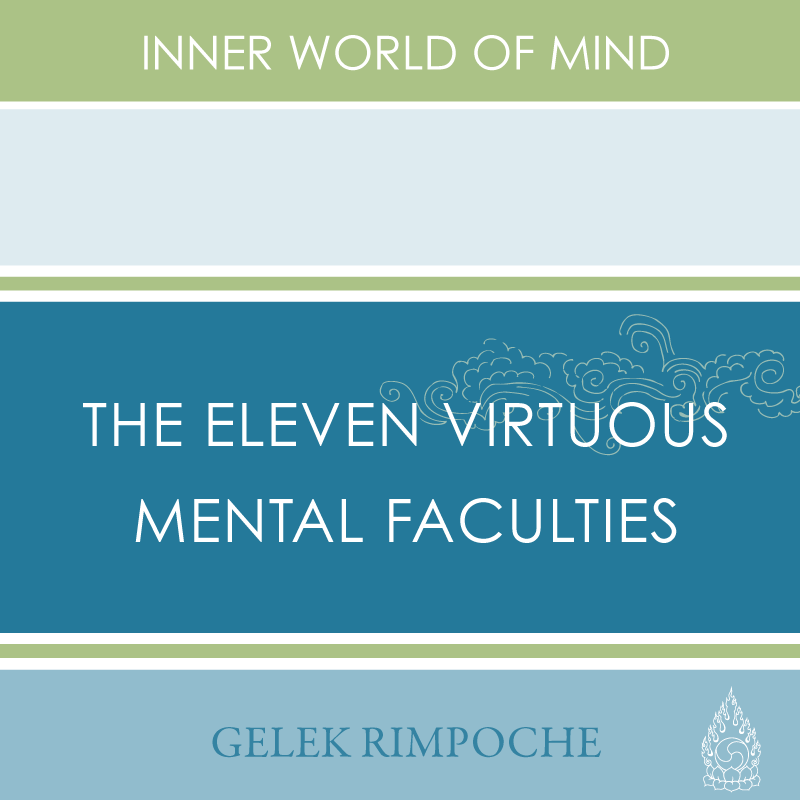
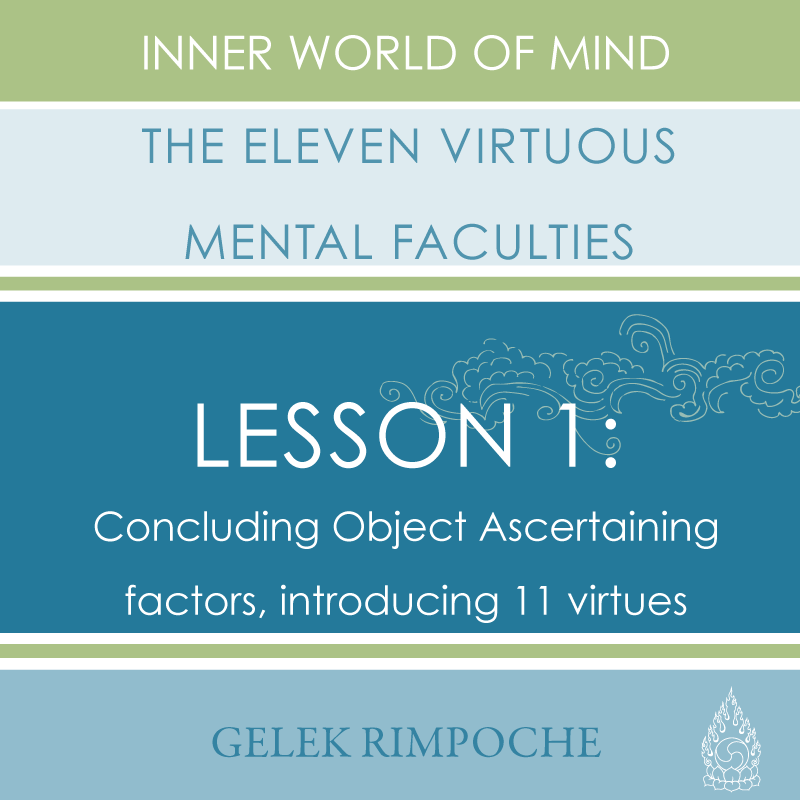
Concluding Object Ascertaining factors, introducing 11 virtues
Lesson Number 1 of 6
In this session, Gelek Rimpoche concludes the discussion of the five object-ascertaining mental factors, explaining that they become positive or negative depending on accompanying mental factors. These five factors can ascertain both existent and nonexistent things.
He then introduces the 11 virtuous mental factors. The first of these, faith, has three types: clear, inspired faith; reasoned conviction; and longing faith.
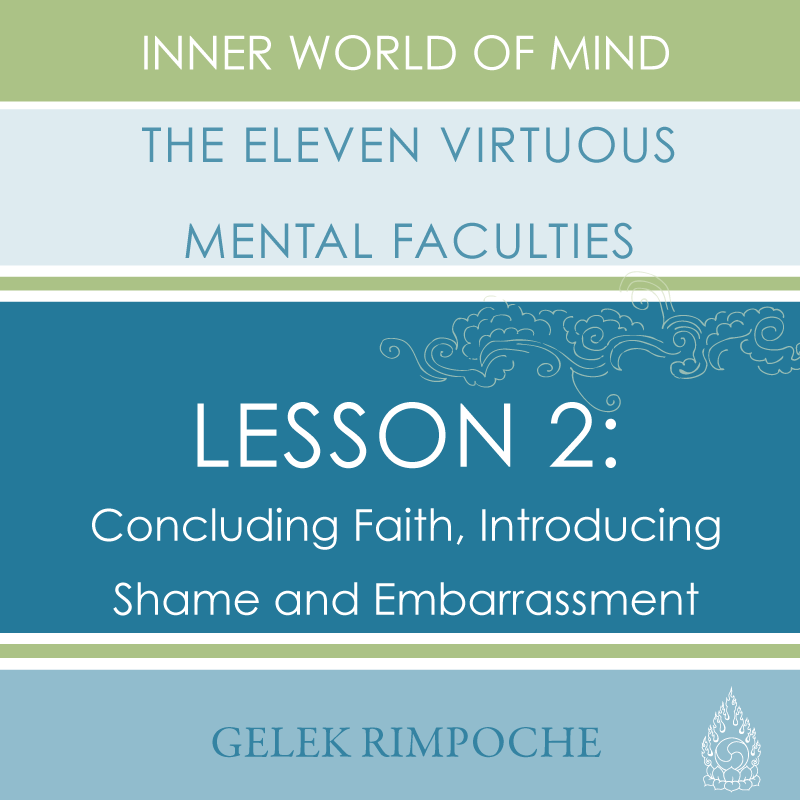
Concluding Faith, Introducing Shame and Embarrassment
Lesson Number 2 of 6
In Buddhism, faith has to follow reliable reasoning, not blind belief. Gelek Rimpoche tells us how each of the three types of faith uplifts and helps the individual.
The next two virtuous mental factors are shame and embarrassment. Though disliked by many Westerners, they are virtuous mental faculties when used to protect against negativities. They help us to develop non-attachment, non-hatred and non-ignorance, the opposites of the three poisons.
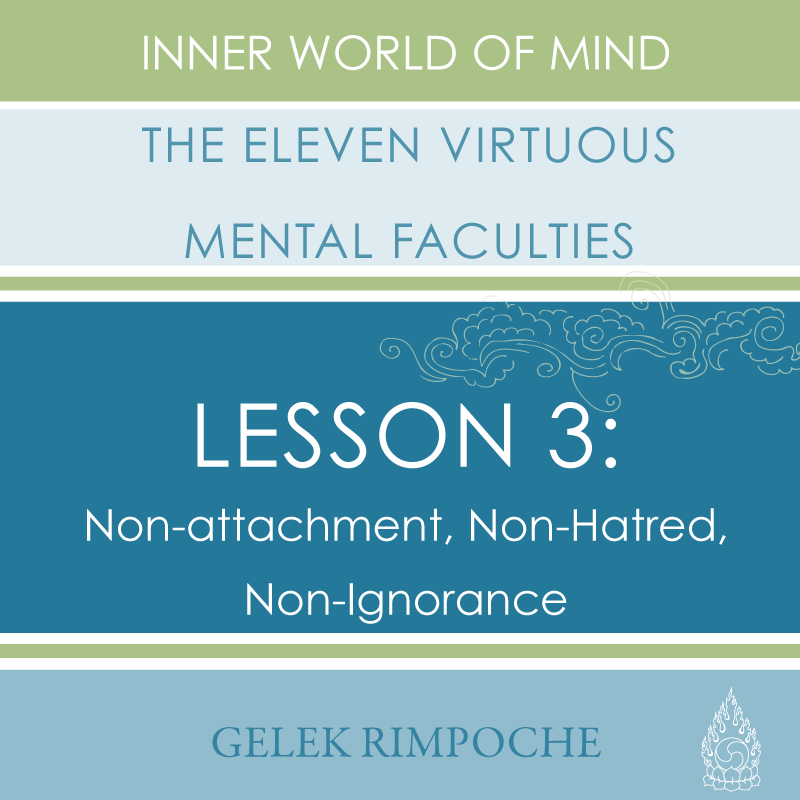
Non-attachment, Non-Hatred, Non-Ignorance
Lesson Number 3 of 6
After a brief review of the mental faculties of faith, shame and embarrassment, Gelek Rimpoche explains that non-attachment or non-obsession are disinterest and revulsion for even the picnic spots of samsara.
Non-hatred is stopping hatred or anger when there is an opportunity for it to arise, keeping the mind free of malice. Non-ignorance is more than just learning information. It is discriminating wisdom.
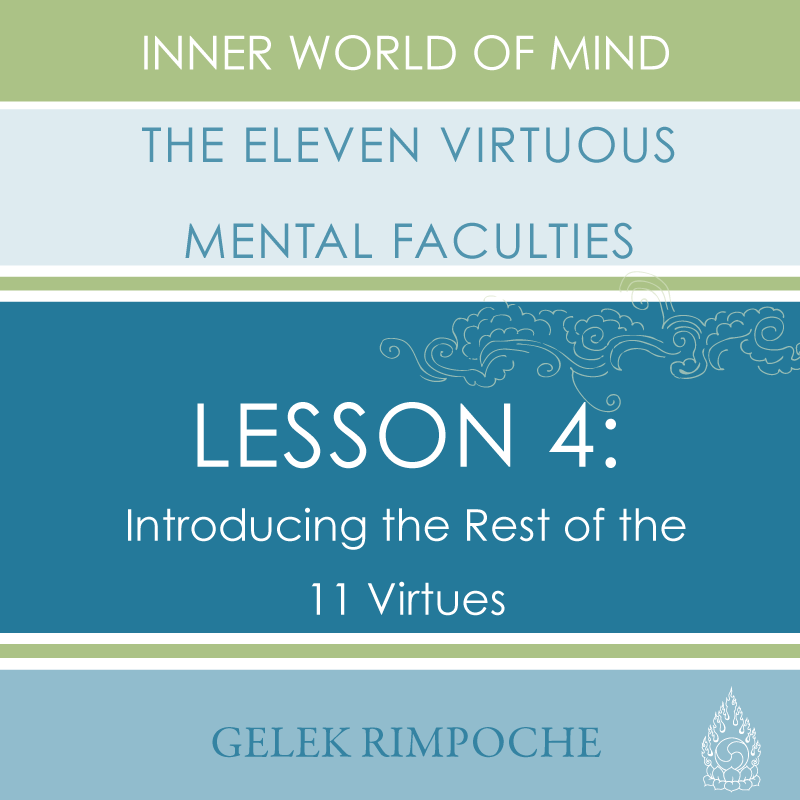
Introducing the rest of the 11 virtues
Lesson Number 4 of 6
In this session, Gelek Rimpoche reviews non-hatred and non-ignorance, then explains the mental faculties of enthusiasm, exceptional flexibility of body and mind, conscientiousness and equanimity. Finally, he begins a discussion of non-violence.
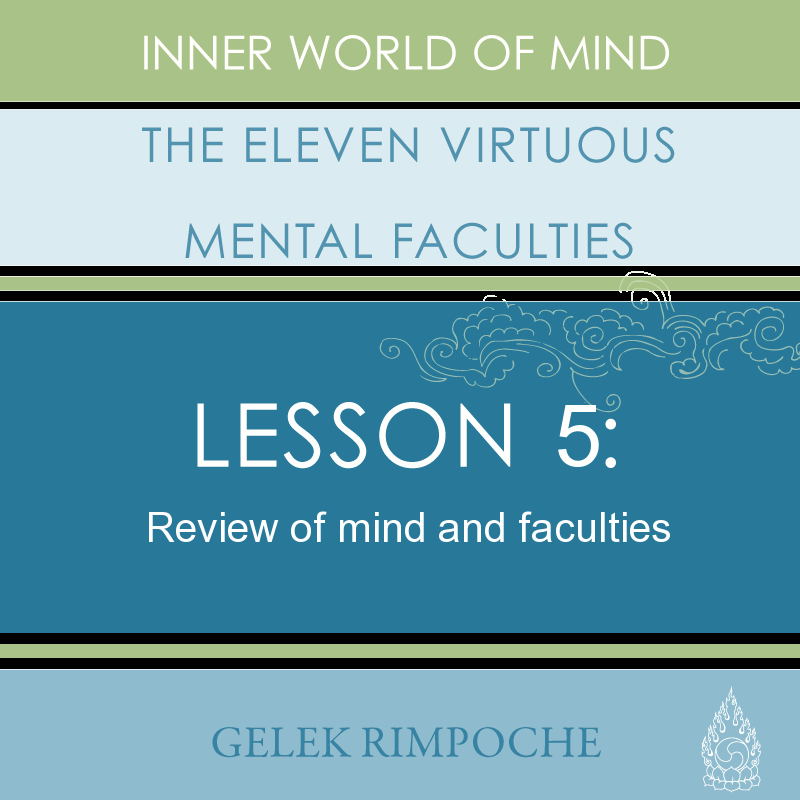
Review of mind and faculties
Lesson Number 5 of 6
Gelek Rimpoche begins this session by reviewing how various mental factors ‘color’ our clear, lucid mind. Learning about and working with our own mental faculties allows us to ‘be our own psychologist’.
He then continues with a discussion of non-violence—the eleventh virtuous mental factor—which is based on compassion and patience. He concludes with a short commentary on the synopsis verses on the first ten virtuous factors.
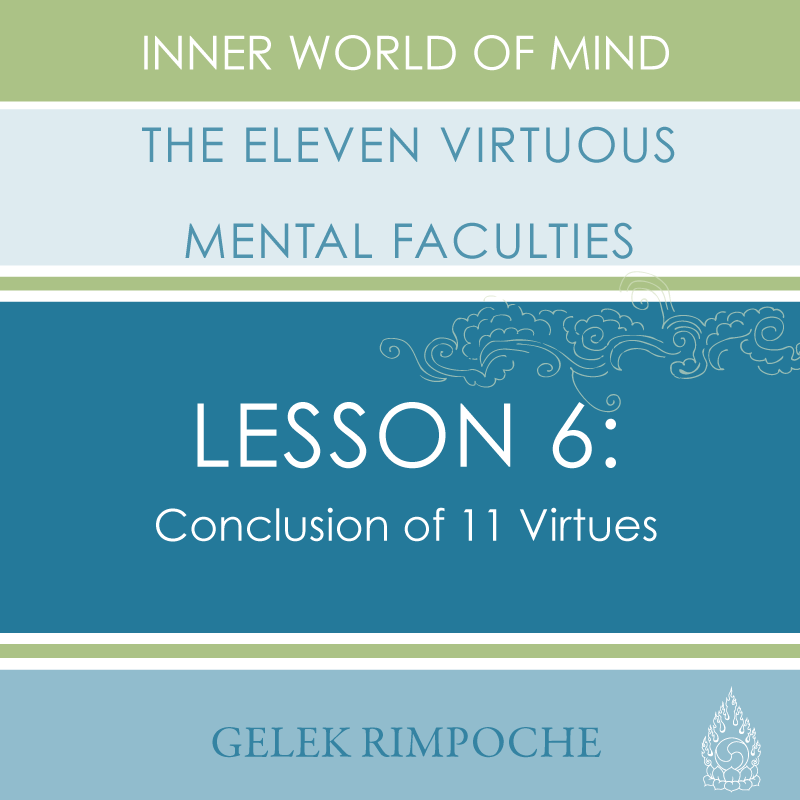
Conclusion of 11 virtues
Lesson Number 6 of 6
In this session, Gelek Rimpoche concludes the synopsis of the eleven virtuous faculties, after first making further comments on nonviolence. The essence of Buddha’s teaching is nonviolence—to do no harm, physically, verbally or mentally through emotions.
All eleven virtuous faculties are pure by nature. Our job as practitioners is to understand our minds so that we can the foster the mental faculties necessary to create positive karma and reduce or eliminate negative, harmful mental faculties. That is how we make progress, and gain strength and stability whatever our circumstances.

